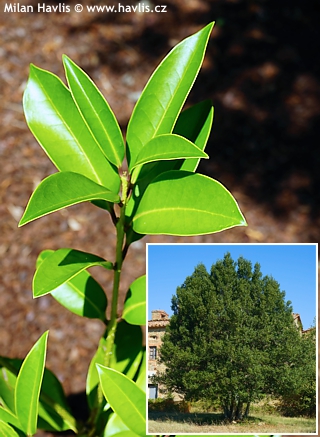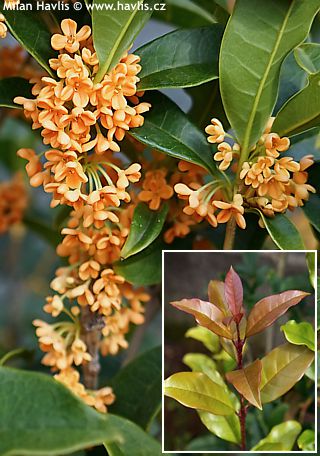
Osmanthus americanus (Cartrema americana) devilwood, wild olive
Osmanthus
Osmanthus is a genus of only about 15-20 evergreen species and varieties, and a genus which I fell in love with the first time I saw a few plants of. Their leathery and sometimes spiny leaves resemble hollies but osmanthus plants have something extra which gave them their name derived from Greek: osme = fragrance and anthos = flower. Osmanthus has tiny but highly fragrant flowers. I was an amateur when I bought the first plants and I had no idea that in all encyclopedias they were rated too tender for our C.E. climate. And since I never knew I put them to my garden. And after some 15 years of growing I can assure you that all of them not only survived even the worst winter of 2006/2007, they thrive and some of them are taller than me and I am very close to 2m. Including the most tender one o.fragrans. I keep on trialling more species and varieties because I noticed that they have some genetic predisposition for extreme drought tolerance in summer and some are even happy with dry soil in winter. And with current lack of precipitation we will need more of drought tolerant plants.
Devilwood is an American version of famous sweet olive shrub from Asia. These two plants, side by side, are difficult to differentiate. They can serve as a proof that there used to be just one piece of land on Earth (Pangea) before it split to seven continents. And individual species, though previously identical, evolved separately reflecting slightly changing growing conditions. In case of American devilwood the benefit is improved hardiness. After the discovery that osmanthus sp. was polyphyletic devilwood was segregated under cartrema genus in 2011.
Devilwood, or also called wild olive, is an evergreen mid-sized shrub or a small multistemmed tree of symmetrical, broadly oval to almost rounded canopy and dense habit. Leaves are leathery, rich green, slightly glossy, and have smooth, entire margins. They are elongated to broadly elliptic, 7-14 cm long. In spring appear tiny, creamy white, and very fragrant flowers.
The plant is difficult to propagate (either seeds or cuttings) hence its higher price and limited availability. Plant collectors will obviously give it a place of honour in their gardens, others can use it in mixed hedges and evergreen borders along with plants of differently shaped and sized foliage for a dramatical contrast (Japanese azaleas, Japanese holly etc.). Devilwood responds well to pruning and regenerates also when pruned hard into old wood. Spring pruning will enhance production of new twigs, summer trimming/clipping is good for shaping.
Grow osmanthus in moist but well-drained, humus rich, preferably acidic soil. It loves full sun and once established it does not require extra watering. It is hardy to about -27 °C without protection (USDA zone 5b), just a good mulch is advisable in regions with harsh and long-lasting winters.
Last update 19-10-2020






































